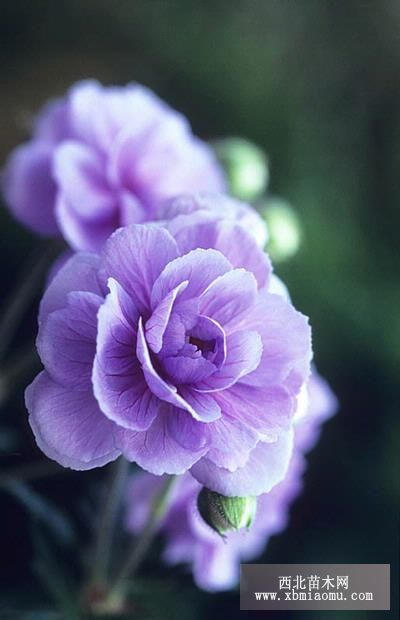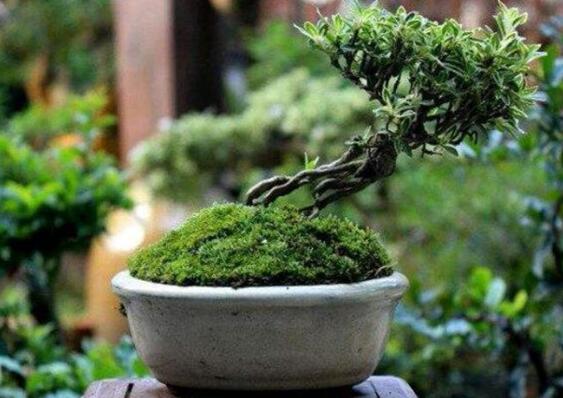How to care for geraniums?
Geranium, also known as celebrity wax red, paraffin red. Is a kind of unbroken potted flowers, indoor layout or balcony, garden is ideal. Its shortcomings are that flowers are not fragrant, and the other is that stems and leaves have a special smell.
temperature
Geranium is not resistant to cold, winter can be placed indoors facing south window sunny place. It can also be cultivated in large areas in greenhouse hotbeds. Geranium sunshine, spring can be moved to outdoor terrain higher, well-ventilated, sunny place. But in summer, fear of the sun, fear of high temperature, should be placed in a ventilated, cool place. In addition to opening doors and windows for ventilation, indoor culture must be shaded with curtains to do a good job in summer. From July to August, it is semi-dormant, poor growth and flower shedding. September to October will be strong again.
watering
Summer every morning watering, evening to see the pot soil dry and wet degree, pot soil dry water once, but this time not enough watering, winter temperature is low, plant growth is slow, do not need to water every day, generally 6~7 days watering once, the specific should also depend on the weather and pot soil dry and wet degree and decide. Watering at noon in winter is good to avoid too much difference between temperature and water temperature and affect growth. Pelargonium slightly resistant to drying, not waterlogging, excessive moisture will cause excessive growth of stems and leaves affecting flowering. Especially in outdoor maintenance, if it rains for a long time in summer, it is necessary to pour water from the side basin.
fertilization
Topdressing should be applied at least once a year at the beginning of spring, summer and autumn equinox, and liquid fertilizer should be applied less frequently every day. Lack of fertilizer can not be very good flowering, but fertilization should not be too much, so as not to stem excessive growth, spring and autumn season, generally 10 days of topdressing. Bud formation to flowering stage can be 7 days a topdressing, promote flower color Yan. Composted human excrement and cake manure can be used as fertilizer. Ratio of fertilizer to water 1:5. After fertilization, water should be sprayed (commonly known as "returning water") to prevent fertilizer from reaching the leaves. July to August summer season, the plant is in a dormant state, growth stops, generally do not need to fertilize.
pruning
Often stripped of yellow leaves, flowers fade, the plant needs to be trimmed short, this work can be combined with pot turning in late summer and early autumn to change the soil. Before turning over the pot, cut off the geranium from the stem about 3~4 nodes with a sharp knife, leaving about 10~15 cm of stem (called back). After pruning, do not water for about 4~5 days to facilitate wound drying and avoid water decay. Pruning can make plants short and round. For large geranium more than 3 years old, in order to cultivate tall plants, only the upper part of the branches can be pruned. Pelargonium grows new branches and leaves after pruning, and new flowers grow in leaf axils. It blooms continuously from October of that year to June of the following year, with the peak flowering from April to June.
How to care for geraniums
Pelargonium also celebrity wax red, paraffin red. Is a kind of unbroken potted flowers, indoor layout or balcony, garden is ideal. Its shortcomings are that flowers are not fragrant, and the other is that stems and leaves have a special smell. procedure/method
Geranium temperature is not resistant to cold, winter can be placed indoors facing south window sunny place. It can also be cultivated in large areas in greenhouse hotbeds. Geranium sunshine, spring can be moved to outdoor terrain higher, well-ventilated, sunny place. But in summer they fear the sun. Fear of high temperature, should be placed in a ventilated, cool place. In addition to opening doors and windows for ventilation, indoor culture must be shaded with curtains to do a good job in summer. 7-8 The moon was semi-dormant, poor growth, flower shedding. September-October will be full again.
Watering summer every morning watering, evening to see the salt soil dry and wet degree. If the pot soil is dry, water it once, but this time it should not be watered enough. The winter temperature is low, the plant grows slowly, so it does not need to be watered every day. Generally, it can be watered once every 6-7 days. The specific water should also depend on the weather and the degree of dryness and wetness of the pot soil. Watering at noon in winter is good to avoid too much difference between temperature and water temperature and affect growth. Pelargonium slightly resistant to drying, not waterlogging, excessive moisture will cause excessive growth of stems and leaves affecting flowering. Especially in outdoor maintenance, if the summer rain is not sunny, to pour water from the side basin, the most taboo basin water.
Fertilization at least once a year in spring, summer and autumn equinox, and apply liquid fertilizer less frequently every day. Lack of fertilizer can not be very good flowering, but fertilization should not be too much, so as not to stem excessive growth, spring and autumn season, generally 10 days of topdressing. Bud formation to flowering stage can be 7 days a topdressing, promote flower color Yan. Composted human excrement and cake manure can be used as fertilizer. The ratio of fertilizer to water is 1:5. After fertilization, water should be sprayed (commonly known as "returning water") to prevent fertilizer from reaching the leaves. 7-8 In the summer season, the plant is in a dormant state, growth stops, and generally does not need to be fertilized.
Pruning often strips the yellow leaves. After flowering, the plants need to be pruned short. This work can be carried out in late summer and early autumn in combination with pot turning and soil changing. Before turning over the pot, cut the geranium from the stem about 3-4 nodes with a sharp knife, leaving about 10 - 15 cm of stem (called back). After pruning, do not water for about 4-5 days to help the wound dry and shrink and avoid decay caused by water. Pruning can make plants short and round. For large geranium more than 3 years old, in order to cultivate tall plants, only the upper part of the branches can be pruned. After pruning, new branches and new leaves grow, and new flowers grow in leaf axils. From October of that year to June of the following year, flowers bloom continuously, with the peak flowering in April and June.
How to care for geraniums? Pelargonium also celebrity wax red, paraffin red. Is a kind of unbroken potted flowers, indoor layout or balcony, garden is ideal. Its shortcomings are that flowers are not fragrant, and the other is that stems and leaves have a special smell. Temperature. Geranium is not resistant to cold, winter can be placed indoors facing south window sunny place. It can also be cultivated in large areas in greenhouse hotbeds. Geranium sunshine, spring can be moved to outdoor terrain higher, well-ventilated, sunny place. But in summer they fear the sun. Fear of high temperature, should be placed in a ventilated, cool place. In addition to opening doors and windows for ventilation, indoor culture must be shaded with curtains to do a good job in summer. 7-8 The moon was semi-dormant, poor growth, flower shedding. September-October will be full again.

Watering. Watering every morning in summer, evening to see the salt soil dry and wet degree. If the pot soil is dry, water it once, but this time it should not be watered enough. The winter temperature is low, the plant grows slowly, so it does not need to be watered every day. Generally, it can be watered once every 6-7 days. The specific water should also depend on the weather and the degree of dryness and wetness of the pot soil. Watering at noon in winter is good to avoid too much difference between temperature and water temperature and affect growth. Pelargonium slightly resistant to drying, not waterlogging, excessive moisture will cause excessive growth of stems and leaves affecting flowering. Especially in outdoor maintenance, if the summer rain is not sunny, to pour water from the side basin, the most taboo basin water. Fertilization. Topdressing should be applied at least once every spring, summer and autumn equinox, and liquid fertilizer should be applied less frequently every day. Lack of fertilizer can not be very good flowering, but fertilization should not be too much, so as not to stem excessive growth, spring and autumn season, generally 10 days of topdressing. Bud formation to flowering stage can be 7 days a topdressing, promote flower color Yan. Composted human excrement and cake manure can be used as fertilizer. The ratio of fertilizer to water is 1:5. After fertilization, water should be sprayed (commonly known as "returning water") to prevent fertilizer from reaching the leaves. 7-8 In the summer season, the plant is in a dormant state, growth stops, and generally does not need to be fertilized. Trim. Often stripped of yellow leaves, flowers fade, the plant needs to be trimmed short, this work can be combined with pot turning in late summer and early autumn to change the soil. Before turning over the pot, cut the geranium from the stem about 3-4 nodes with a sharp knife, leaving about 10 - 15 cm of stem (called back). After pruning, do not water for about 4-5 days to help the wound dry and shrink and avoid decay caused by water. Pruning can make plants short and round. For large geranium more than 3 years old, in order to cultivate tall plants, only the upper part of the branches can be pruned. After pruning, new branches and new leaves grow, and new flowers grow in the axils. From October of that year to June of the following year, flowers bloom continuously, with the peak flowering in April and June.
- Prev

How to shape and trim the snow bonsai in June?
June snow is also known as the big star, the leaves are small, white flowers bloom in summer, hence the name June snow. The bonsai made of snow in June shows its roots and claws, clear and elegant, changeable posture and peculiar charm. June snow branches are soft, easy to tie the shape, young trees can make miniature bonsai. Making large and medium-sized bonsai in the south, most of them go to the mountains to dig old piles.
- Next

The breeding method of large flower geranium and the breeding method of geranium burst pot, geranium cutting method and time
(1)Sowing and reproduction can be carried out in spring and autumn sowing, indoor pot sowing in spring is good. The optimum temperature for germination was 20~25℃. Pelargonium seeds are not large, the soil should not be deep after sowing, and germinate after about 14 to 21 days. Autumn sowing, the next summer can flower. seeded seedling
Related
- Fuxing push coffee new agricultural production and marketing class: lack of small-scale processing plants
- Jujube rice field leisure farm deep ploughing Yilan for five years to create a space for organic food and play
- Nongyu Farm-A trial of organic papaya for brave women with advanced technology
- Four points for attention in the prevention and control of diseases and insect pests of edible fungi
- How to add nutrient solution to Edible Fungi
- Is there any good way to control edible fungus mites?
- Open Inoculation Technology of Edible Fungi
- Is there any clever way to use fertilizer for edible fungus in winter?
- What agents are used to kill the pathogens of edible fungi in the mushroom shed?
- Rapid drying of Edible Fungi

